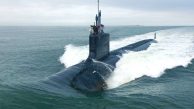
SQN LDR Robert James Clarendon Whittle OAM, DFC
Amidst the tumultuous backdrop of World War II, Robert James Clarendon Whittle emerged as a symbol of unwavering courage and commitment. Born on July 10, 1914, in Brisbane, Australia, his destiny took a pivotal turn when he enlisted in the Royal Australian Air Force (RAAF) in April 1940. Prior to his military service, Whittle had worked as a chemist in Murwillumbah, showcasing his versatility and intellectual acumen.
The exigencies of war led Whittle to undergo rigorous training before being deployed to the Middle East. On May 5, 1941, he found himself assigned to the 250 Squadron (RAF), where he swiftly demonstrated exceptional prowess as a fighter pilot. By mid-December of that year, his combat record was nothing short of remarkable – 9 aircraft destroyed, 1 shared destroyed, 2 probables, and 2 damaged.
Whittle’s exceptional service did not go unnoticed. His courage and skill in the face of adversity earned him the Distinguished Flying Medal (DFM). The citation accompanying the award painted a vivid portrait of his character, emphasizing instances where he walked twenty miles through the night after being shot down, only to rejoin his squadron the next day. Even when wounded, Whittle displayed resilience by resuming operational flying within a mere two days, ultimately accounting for at least seven enemy aircraft.
His wartime odyssey took him briefly to the 730 Training Unit before returning to Australia in April 1942. In early 1943, Whittle joined the 86 Squadron, stationed in Merauke, Dutch New Guinea. His ascendancy continued as he was promoted to Flight Leader in September, later assuming the role of Commanding Officer on December 17. His final feats included downing a Zeke and sharing in the destruction of a Betty near Cape Valsch, bringing his total kills to an impressive 14.
After departing from active duty in June 1944, Whittle transitioned to a role as an instructor until his honourable discharge on December 4, 1945. Post-war, he returned to his pre-enlistment profession as a pharmacist. In 1946, he played a pivotal role in establishing the local Aero Club, imparting his aviation knowledge as an instructor.
A scion of the Whittle family, Bob maintained a profound connection to Murwillumbah. His 50-year tenure in the Rotary Club, including a term as President, underscored his commitment to community service. His association with the Tweed River Historical Society, later becoming the Murwillumbah Historical Society, was instrumental, earning him a Life Membership.
Educated at Brisbane Grammar School and qualified from Brisbane Pharmacy College, Bob Whittle’s dedication extended beyond the realms of war and professional life. He and his wife Frances raised five children in Murwillumbah. His contributions were further recognized by Tweed Shire Council, which named its light aircraft landing strip the Bob Whittle Airfield in acknowledgment of his meritorious service.
Today, the Murwillumbah Museum stands as a living testament to Bob Whittle’s passion for preserving the history of the Tweed. His selfless years of devotion and keen interest in the region’s early history have left an indelible mark, shaping the community’s understanding of its past. Bob’s legacy lives on, not only through the records of his wartime heroics but also in the cultural and historical fabric of Murwillumbah. His life, marked by bravery, resilience, and dedication, serves as an enduring inspiration for generations to come.
ED: I’m proud to tell you that the Late Bob Whittle was my uncle … he will never be forgotten. Ray



